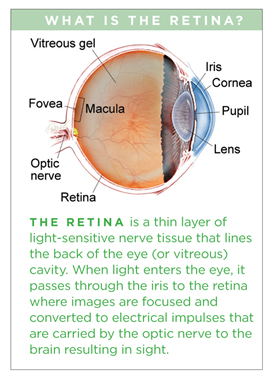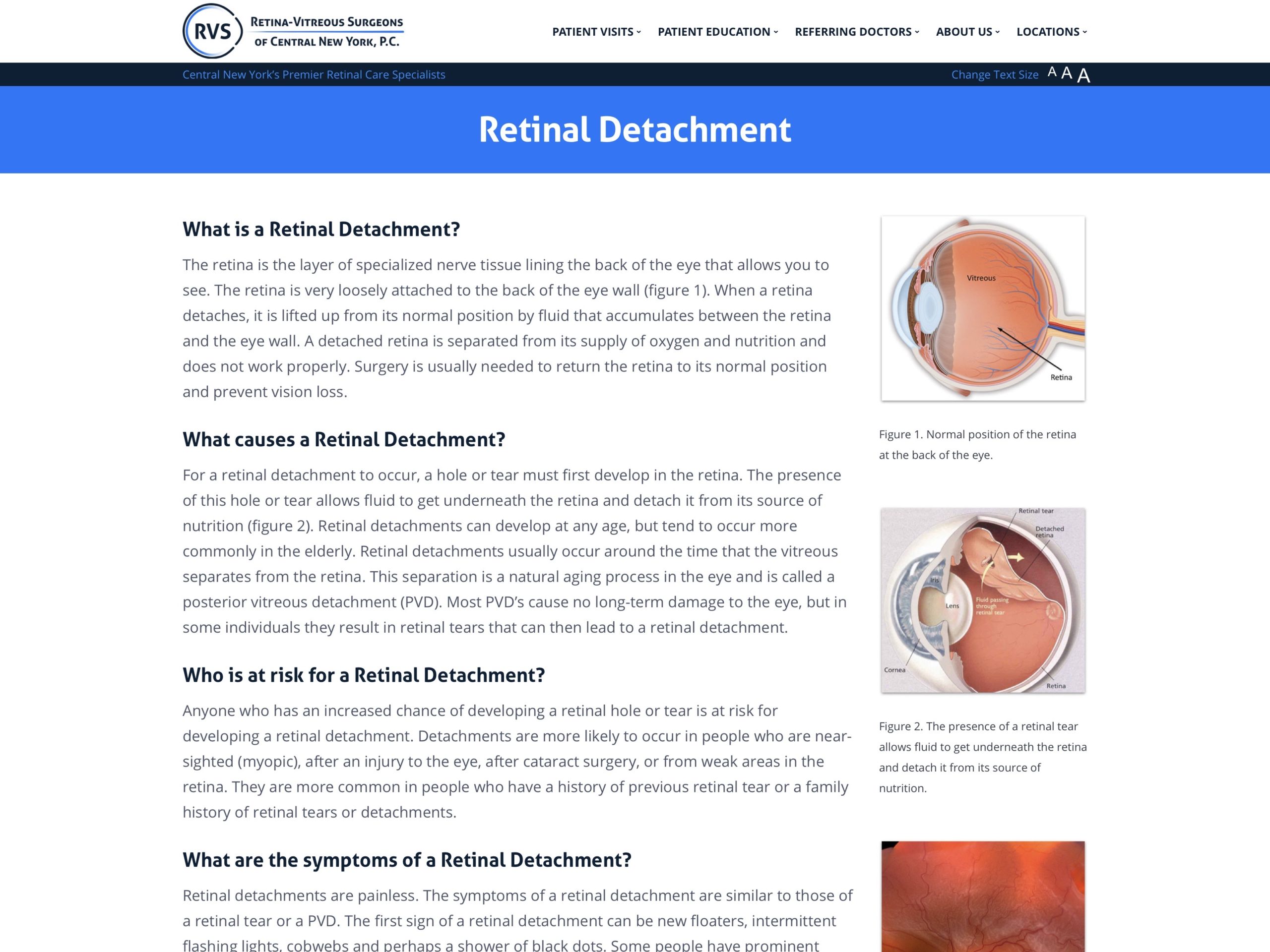Describe the Common Procedure Used to Treat Retinal Tears
Detachment causes permanent vision loss. Your healthcare provider will use a special freezing probe to freeze the retina.

Retinal Detachment Nyc Retina Retina Specialists
Recovery period for retinal laser surgery is up to 3 weeks.

. The surgeon suggested that the tear was very small and that treatment could potentially wait though he indicated that treatment would be needed at some time in the not too distant future. This procedure uses gas to push the retina together with the wall of the eye to. Its a diagnostic tool used in diagnosing corneal abrasions.
Ask your ophthalmologist about the risks and benefits of your treatment options. Scleral buckle Anterior posterior chambers. Retinal detachment describes a much larger separation of the retina tissues.
Retinal detachment describes a much larger separation of the retina tissues. Freezing treatment cryopexy A special freezing probe is applied to the sclera white part of. The healing that occurs after laser essentially spot-welds the retina down and prevents the tear from causing a retinal detachment.
Both of these treatment options attempt to keep the retina in place and keep it from fully detaching. Once a retinal tear has been detected the ophthalmologist will work on the treatment options mostly in clinical setup. The scarring that results seals the retina to the underlying tissue helping to prevent a retinal detachment.
Ad Watch the Video to Discover Why Genetic Testing Matters for Your Patients. Cryotherapy cold therapy or laser therapy to seal the tears. Long-acting gases require special head posture from a few days up to two weeks.
Surgery is almost always used to repair a retinal tear hole or detachment. There are 2 ways that your eye doctor can fix holes or tears in your retina. The goal is to keep fluid from going through the tear and detaching the retina.
Located within the upper eyelid near the outer angle of the orbit. More intricate surgery may be necessary. Although it is not exclusive to older people its more common in those over age 40.
Most tears of the retina require some form of treatment. Laser surgery for a retinal tear involves using laser technology to weld the retina to two structures called the retinal pigmented epithelium and the choroid notes Williamson Eye Institute. If detected early enough retinal detachment can be treated with the procedures used for some tears.
1 Laser surgery photocoagulation. If tears are not treated quickly this layer of tissue can eventually detach from the inside of the eye. Both of these treatment options attempt to keep the retina in place and keep it from fully detaching.
Detachment causes permanent vision loss. The cryotherapy probe is placed on the outside surface of the eye directly over the area of the retinal tear. The common types of treatment are photocoagulation specialized laser treatment or cryopexy freezing.
The surgeon uses a special probe that delivers intense cold. Freezing the retina from the outside of the eye yields the exact same results. Together you can determine what procedure or combination of procedures is best for you.
Occasionally it is not possible to place laser treatment. Learn More About Inherited Retinal Disease and How It Affects Your Patients. Laser is used to create tiny burns around the retinal tear.
Cryotherapy involves a technique called scleral depression. Although it is not exclusive to older people its more common in those over age 40. Extreme cold is used to seal the retina to the wall of the eye.
Your healthcare provider will use a laser to make small burns around the retinal tear. Treatment options for retinal tears include. Various techniques are available.
Treatment is performed in an office setting and is very effective and quite safe. Cryotherapy seals the tears. Diathermy marks areas of tears.
The scars seal the retina to the wall of the eye. In this case a freezing procedure called cryopexy is used to treat the retinal tear instead. The retina scars to the underlying tissue and fluid can not get underneath the retina.
Whats the common procedure used to treat retinal tears. The laser is used to surround a tear with several rows of laser spots which turn into a scar within a week. Laser surgery photocoagulation Freeze treatment cryopexy.
Tears and detachments can be treated with laser surgery or an advanced freezing process. The retinal pigmented epithelium or RPE is a layer of cells that provide support underneath the retina while the. An intraocular gas may be injected to create pressure on the retina.
If detected early enough retinal detachment can be treated with the procedures used for some tears. In order to repair a retinal tear your ophthalmologist may advise you to undergo a laser surgery called retinopexy or retinal laser photocoagulation. The most common treatment for a retinal tear is to use multiple laser pulses around the tear to weld the retina back together.
This treatment usually takes less than 30 minutes. Please loginregister to bookmark chapters. Retinal tear and retinal detachment can be recognized during ophthalmoscopy an examination performed by using a specially designed scope and magnified condensing lens which allows a clear three-dimensional panoramic view of the peripheral retina.
Tears and detachments can be treated with laser surgery or an advanced freezing process. Laser surgery photocoagulation During this procedure a laser is used to make small burns around the retinal tear. Retinal tears are typically treated with laser or a freezing procedure cryotherapy.
More intricate surgery may be necessary. If tears are not treated quickly this layer of tissue can eventually detach from the inside of the eye. This procedure uses gas to push the retina together with the wall of the eye to.
Cryotherapy or freezing is an older technique and was a common way to treat retinal tears before laser. Treatment for Retinal Tears. What intraocular gases may be used in the treatment of retinal tears.
It may be done right in your ophthalmologists office. Another technique used during ophthalmoscopy involves gentle indentation of the eye wall with a blunt instrument to enhance. The goal of the treatment is to seal the edges of the retinal tear and prevent the liquid inside the eye from seeping under the retina through the tear as this can lead to retinal detachment.
In laser therapy a laser is directed into the eye and is focused on the area of the retinal tear. Treatment is performed in an office setting and is very effective and quite safe.

Retinal Tears Patients The American Society Of Retina Specialists

Comments
Post a Comment